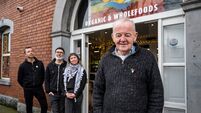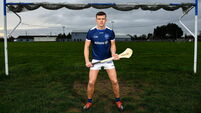Still the greatest
IT TAKES a lot to stop the traffic in Harlem. The New York neighbourhood, for so long a downtrodden African American ghetto, is on the up and up these days, the locals taking control of their own destiny with a plethora of business ventures, fashion and music projects to rival their elitist fellow citizens the other side of Central Park.
What was once the backdrop for Malcolm X's assassination is now a home for former President Bill Clinton and, from last week, Muhammad Ali.
Well, his picture at least. For standing three storeys high overlooking the corner of 125th Street and what some people call Malcolm X Boulevard (though others prefer to call by its old name of Lenox Avenue), is the towering figure of The Greatest in all his pomp.
Taken in May 1965 in Lewiston, Maine, it captures the moment Ali felled the much feared Sonny Liston with one jolting punch in the first round of their heavyweight championship fight. As Liston lies unseen on this wallscape prostrate and unconscious, Ali stands above him, his gloved right hand pointed toward his left shoulder and his gaze fixed on his beaten opponent. It is the image of Ali everyone wants to remember: the iconic boxer, full of strength, aggression, confidence and bravado.
On this billboard, the first of many adidas are about to launch across the world, the words "Impossible is Nothing" are emblazoned across Ali's chest.
Standing beneath it on this Harlem street corner is the Ali we have grown accustomed to: a frail, silent 61-year-old battling the ravages of Parkinson's Disease.
Today is not one of his good days as he unveils the wall-scape with his youngest daughter Leila, another boxing Ali, at the start of a year-long global branding campaign.
Speaking weakens him to the point of exhaustion and Ali prefers to conserve his energy for movement, which today involves greeting an adoring crowd.
It was here that he came, almost 40 years ago, having shocked and dropped Liston to win the heavyweight title for the first time. And the crowd this time round was as young as it had been in the 1960s, reared on legendary tales of a man who transcended boxing and sport itself to become one of the most influential figures of the 20th century.
Ali still has a fascinating power to draw a crowd, to transfix them, to make them smile, just as he did to previous generations. He still manages to transmit an energy, an electricity to those around him that belies his fragile body.
People come away from his presence with huge beaming grins on their faces, their souls uplifted by even the briefest of audiences. It is a truly remarkable and rare sight to behold, even in this age of celebrity hype and glamour.
Sure, David Beckham has an army of swooning teenage girls in his thrall, and Janet Jackson can bring a country to its knees with a brief and titillating glimpse of flesh. But that is transient, minor league stuff compared to the enduring allure of Muhammad Ali. The unveiling ceremony over, Ali was driven across Harlem to 119th Street and the Police Athletic League's gym where Leila, a world champion in the women's fight game, was due to give a short ring workshop with local kids.
Now here was a strange mix of people, adidas reps eager to launch their campaign with Ali at its epicentre, a boxing ring full of kids, their equally excited parents and an eclectic media corps ranging from the New York Times to Footwear News via Women's Wear Daily. Everyone, it seems, wanted to be with The Greatest.
It was as chaotic and spontaneous events as you could imagine, much to the bewilderment of the NYPD whose premises this circus had occupied. Chants of "Ali! Ali!" broke out as he shuffled across to take his seat beneath the big screen as the new campaign was shown.
Coming to a screen near you soon, one ad, called the Long Run, is taken from the documentary 'When We Were Kings', which tells the story of the Rumble in the Jungle in Zaire in 1974.
Ali is shown on an early training run with his entourage although the surrounding figures have cleverly been replaced by adidas' current crop of sports stars Beckham, Zinedine Zidane, Haile Gebrselassie, Ian Thorpe and Leila Ali, to give the appearance that Ali is taking them all for a training run.
And once again the people of Harlem are treated to the conflicting images of Ali in his prime and in his decline within feet of one another.
There are sparks from the man himself. When it appears he has fallen asleep in his chair, the merest mention of his name prompts a manic and momentary leap from his chair to do a pale imitation of the fleeting handwork just witnessed on screen and when photographers get pictures of Ali and his daughter, he makes rabbits ears with his fingers behind Leila's head.
Nothing like the Ali we all came to love and admire but at this stage we'll take what we can get.











